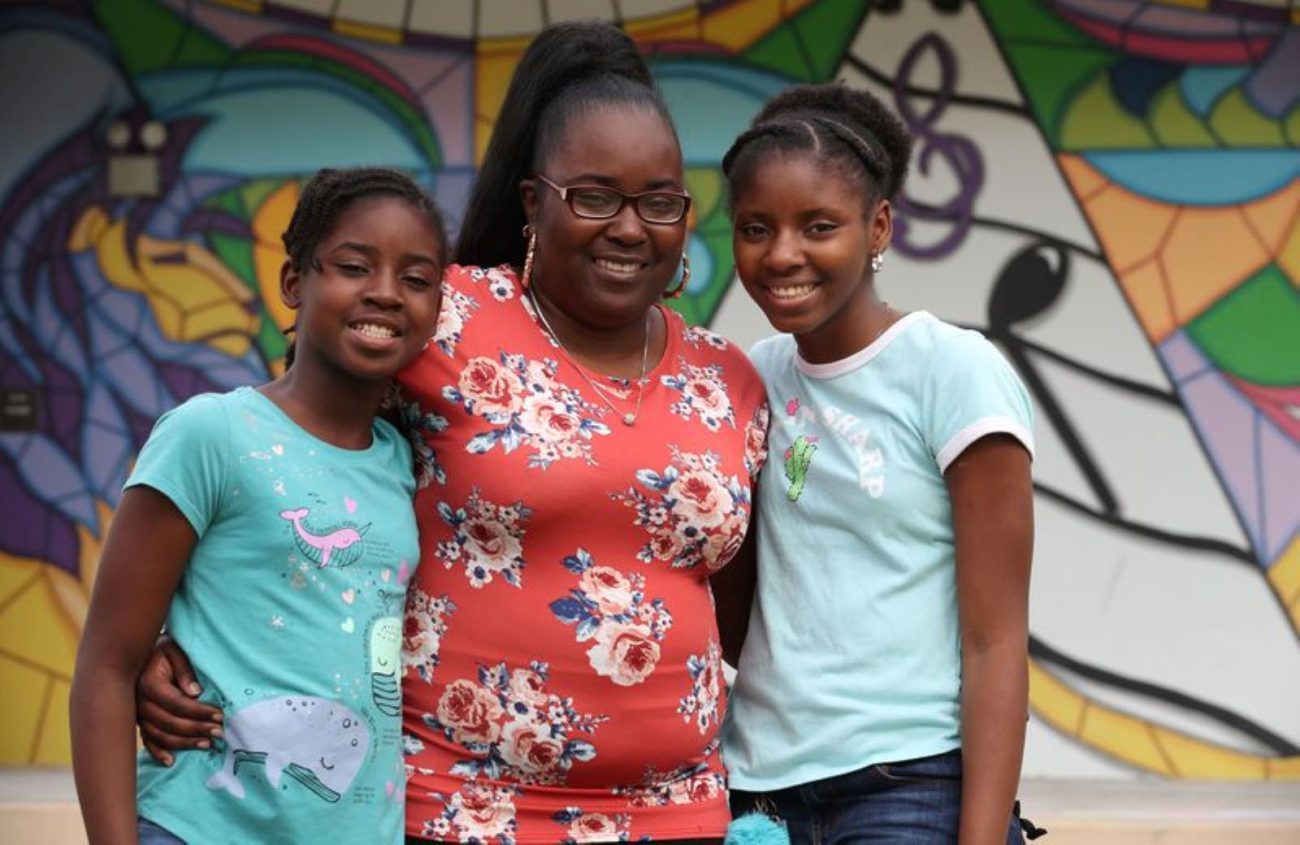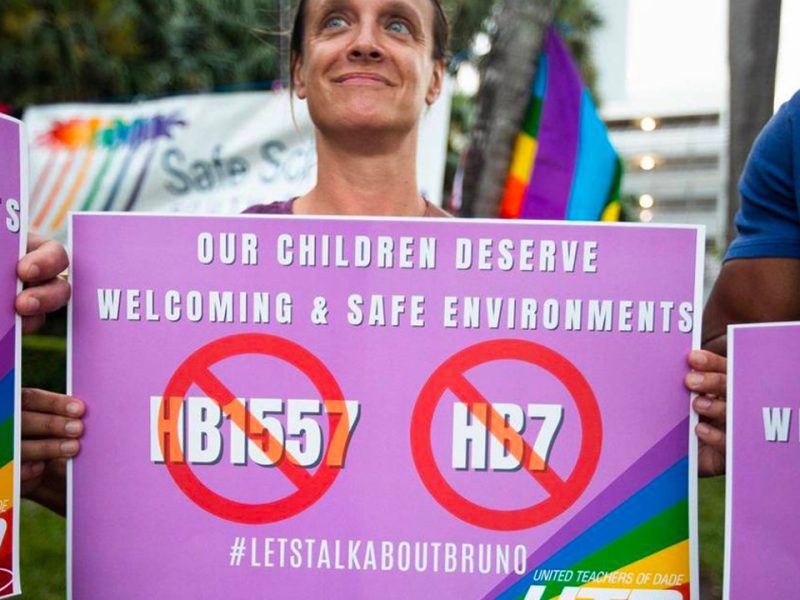More poor, Black and Hispanic students in Central Florida opt for online learning | Special Report
Orlando Sentinel | by Leslie Postal | November 5, 2020
As his administration pushed hard for schools to open in August, Gov. Ron DeSantis said he was championing the needs of low-income working parents who would benefit if campuses welcomed back their children.
That’s not how it played out in Central Florida.
Across Lake, Orange, Osceola and Volusia counties, public schools with the biggest percentages of low-income children — as well as those with large numbers of Black or Hispanic youngsters — often had the largest share of children opting for online learning, an analysis of school district attendance data shows.
“I know the virus has had a disproportionate effect on minority children,” said Joseph Caesar, who is Black and decided his 6-year-old daughter would study remotely this semester instead of attending classes at Englewood Elementary School in Orange County.
“I didn’t want to risk that for my child,” he said. “When you know there’s no treatment, there’s no vaccine, it’s just very difficult to say you want your child back on campus.”
Public schools in Central Florida, like across much of the state, opened in August, giving parents a choice whether their children would study on campus or online during the coronavirus pandemic. A majority kept their children off campus, but the percentages varied by county, by neighborhood, by income and by race.
Dommerich Elementary School in Maitland, for example, had 59% of its students on campus when schools opened Aug. 21, the largest percentage among the Orange school district’s 128 elementary schools. Dommerich’s population is 84% white and less than 18% of its students are poor enough to qualify for the federal lunch program.
Look up your school for in-person vs. virtual enrollment
In-person vs virtual enrollment at the start of this school year for school districts in Orange, Seminole, Osceola, Lake and Volusia. For Seminole, the Sentinel included enrollment in a hybrid program in which the online learning curriculum is not full-time. Scroll right to see all columns.
This version of Orange numbers do not include voluntary pre-Kindergarten.
Volusia schools are middle and high schools only.
Table: Orlando Sentinel Get the data Created with Datawrapper
West Oaks Elementary School in west Orange, by comparison, had 24% of students opt to be on campus, the smallest percentage for OCPS elementary schools. The school’s population is 93% Black and nearly all qualify for the lunch program.
Educators understand the parental decisions but also worry because early reviews of grades and “progress monitoring” data suggest students studying remotely are lagging behind classmates who are on campus.
In Volusia County, for example, 33% of middle school students doing “Volusia live” online lessons had at least one D or F at the end of September, compared with less than 19% of those on campus.
A national survey released in August by researchers at the University of Southern California found that parental interest in having kids study from home during the pandemic varied by income, with those earning less more interested in remote education.
That finding, the report said, “may seem counter intuitive.”
Because lower-income parents typically have jobs they cannot do from home, many assumed they would want their children back on campus.
DeSantis made that argument this summer when he urged the state’s public schools to open.
“Some of those low-income parents, they may not have the same luxuries in terms of the option of what they can do, if the school system is not offering in-person instruction,” he said.
But other USC survey questions — ones that asked “how scared people were” — help explain why low-income parents didn’t rush to put their children in school, said Anna Saavedra, a USC research scientist and the paper’s lead author.
Parents earning less than $50,000, they found, were far more likely to think that if infected with the coronvavirus they would be hospitalized or die compared with those who earned more than $150,000.
Those perceptions align with reality, the authors said, as those with lower incomes, who are often racial minorities, have been disproportionately impacted by the pandemic. In Florida, for example, the mortality rate for Black and Hispanic residents who get COVID-19 is higher than for white or non-Hispanic residents, state data shows.
Others noted that low-income families, compared with more affluent ones, often have more health problems that could make them at higher risk of complications should they get the virus or live with older relatives who are at higher risk. With economic struggles made worse by the pandemic, they also may have more worries about paying for health care should family members become ill.
“My personal precaution was just to wait it out,” said Cassie Mortimore, who is Black and kept her three children home this semester.
Mortimore’s Orlando household includes her grandmother and her mother, both with health problems, and she didn’t want either of them to get sick. She doesn’t personally know anyone who has had coronavirus but knows African-American families like hers are at more at risk.
“Maybe that is a reason where they’re stressing so much in our community for our children to stay home,” she said.
Her children attend OCPS Academic Center for Excellence in Parramore and Jones High School. Jones is 90% Black and nearly all low income. Only 13% of Jones students were on campus in August, the smallest percentage among the 20 OCPS high schools.
Elise Breth, a Maitland mother of two, said she and her husband were convinced that academically, socially and emotionally, it was best for their kids to be in classrooms with their teachers and classmates, but Breth, who is white, said they were also apprehensive about the health risks.
They consulted with their doctors, learned about the schools’ plans for face masks and other safety measures and then decided their kids would return to Dommerich and Maitland Middle School in August. They are lucky, she added, that they are all healthy with no underlying conditions.
“Everybody is really just doing the best they can with the information they have and doing the best for their kids,” she said.
In Osceola, Thacker Avenue Elementary School in Kissimmee — with a population that is 70% Hispanic and 13% Black and nearly 100% low income — had 32% of its pupils on campus as the year began.
By contrast, Hickory Tree Elementary School in St. Cloud had 61% of its students on campus. Hickory Tree is 61% white and about 57% low income.
In Volusia, New Smyrna Beach High School, which is 80% white, had 80% of its students on campus while Deltona High School, which is 57% Black and Hispanic, had about 56% of the teenagers taking in-person classes.
Seminole County’s data, perhaps because that school district gave parents a “hybrid” option allowing them to mix online and in-person classes, did not show any clear patterns.
There also were exceptions. Hungerford Elementary School in Eatonville, for example, has an enrollment that is almost all Black students and low income, yet 46% of its students were on campus, the same as at whiter and wealthier Dr. Phillips Elementary School in south Orange.
School districts gave parents the chance to reconsider their children’s educational model weeks into the school year, and some did. Tiffany Gibson, a Black mom of two, was among them.
She is a reading teacher at OCPS ACE and returned to work in August but initially kept her two daughters off campus, worried about their health. By early October, she was more comfortable with school safety protocols and more worried about their academic performance.
“Being on the computer all day, it’s kind of hard for them,” she said.
Gibson said her oldest, an eighth grader taking advanced classes including high school algebra, wasn’t earning her usual good grades.
“Actually her teachers begged me to bring her back,” she said. “They know her potential. She just needs that face to face.”
Caesar, the Orange father, is the manager of a city neighborhood center in west Orlando, in a largely Black and low-income community. It offers small, and low-cost, “learning pods” for parents who need their children supervised because they work outside their homes but don’t want them with hundreds of others on campus.
His daughter does her online lessons at another neighborhood center and has done well so far. But Caesar said virtual school has proved tough for some children, and that’s forced some parents into hard decisions about whether to put them back in school.
“Everybody wants their child to be able to learn,” he added. “Just the unknown of the virus has been very difficult to determine.”
As Florida and the nation reported spikes in coronavirus cases in late October, Caesar said the center also got calls from parents who have their kids on campus and may now pull them out.
At Windy Hill Middle School in Clermont, Principal William Roberts said a majority of the school’s online students are keeping up academically. But he fears some youngsters, particularly students still learning English, are losing ground without in-person classes.
The school, with a population that is 53% Black and Hispanic, had 42% of its students start the year online, among the highest percentage in Lake County.
“The best instructional opportunity is going to be in person,” he said. “When they’re here, there is much more I can do.”
Tashanda Brown-Cannon is the associate superintendent for the Orange school district’s “school transformation office,” which oversees nine schools where students have struggled academically.
All the campuses serve largely low-income, minority student populations. Many have large percentages of students studying from home, including Meadowbrook Middle School in Pine Hills, where 80% began the school year online.
Preliminary “progress monitoring” data shows that, on average, students off campus are doing worse on tests in math, reading, social studies and science than their on-campus classmates.
That meshes with anecdotal reports from teachers and principals, and Volusia’s data on grades from students’ first progress reports. That showed that 14% of online high school students had four or more Ds and Fs compared with 6% of those on campus, and that nearly 21% of online elementary students had at least one F compared with 11% of those on campus. Other Central Florida school districts said they had not yet compiled reports comparing academic performance online and on campus.
Brown-Cannon said the schools have contacted parents of struggling students to let them know their children could return to campus. Some, but not a lot, chose that option.
“They are really concerned about the COVID health risks,” she said. “We do understand parents. Their concern is legitimate.”
Adelaide Chen of the Sentinel staff contributed to this report.
Image: Tiffany Gibson, with her daughters Ramiya Smith, 10, and Rihanna Smith, 13, at the OCPS Academic Center for Excellence in downtown Orlando, on Wednesday, October 21, 2020. Gibson, a reading teacher at the school, initially had the girls do online learning because of COVID-19 but switched them back to on-campus classes in October. (Ricardo Ramirez Buxeda/ Orlando Sentinel) (Ricardo Ramirez Buxeda/Orlando Sentinel)






